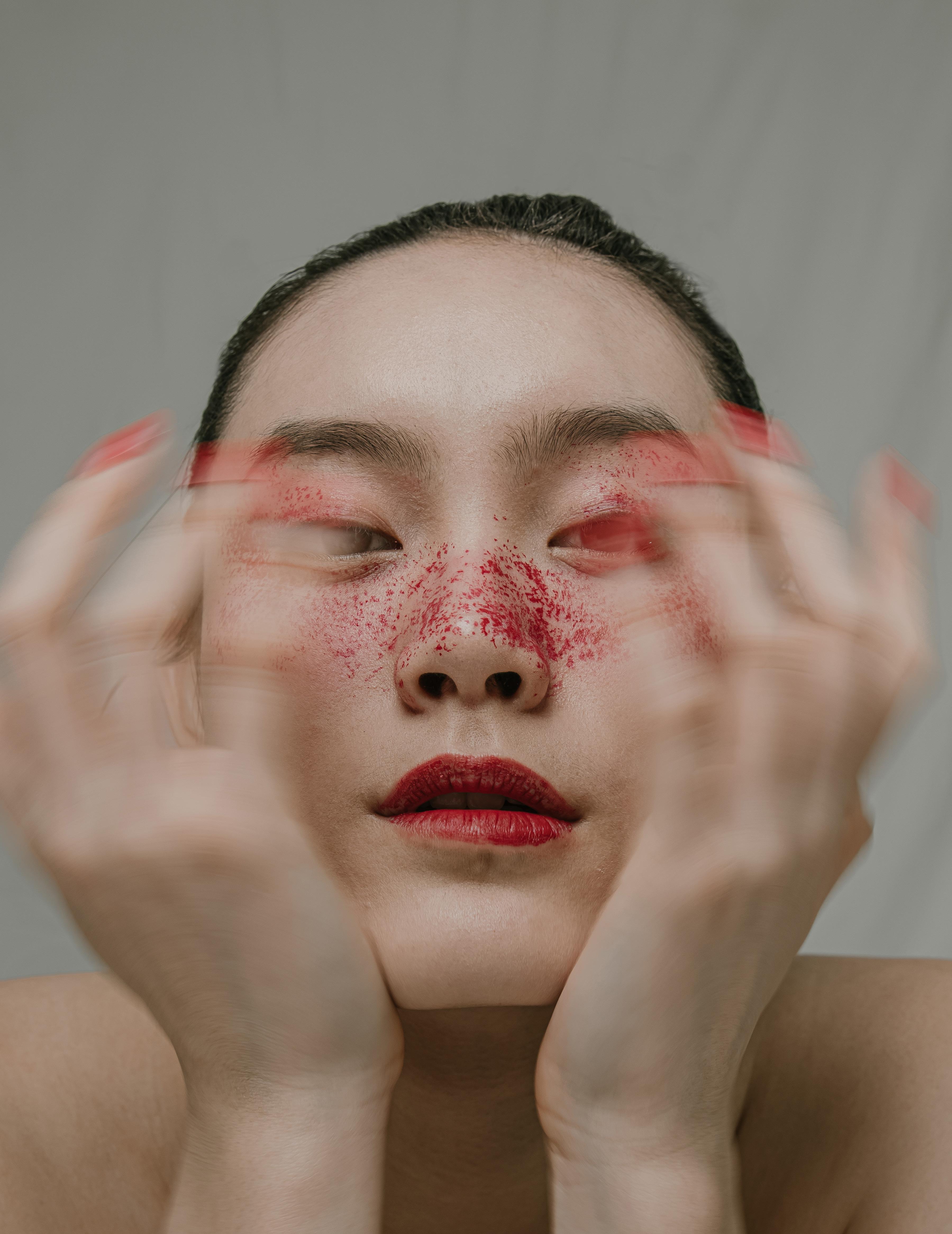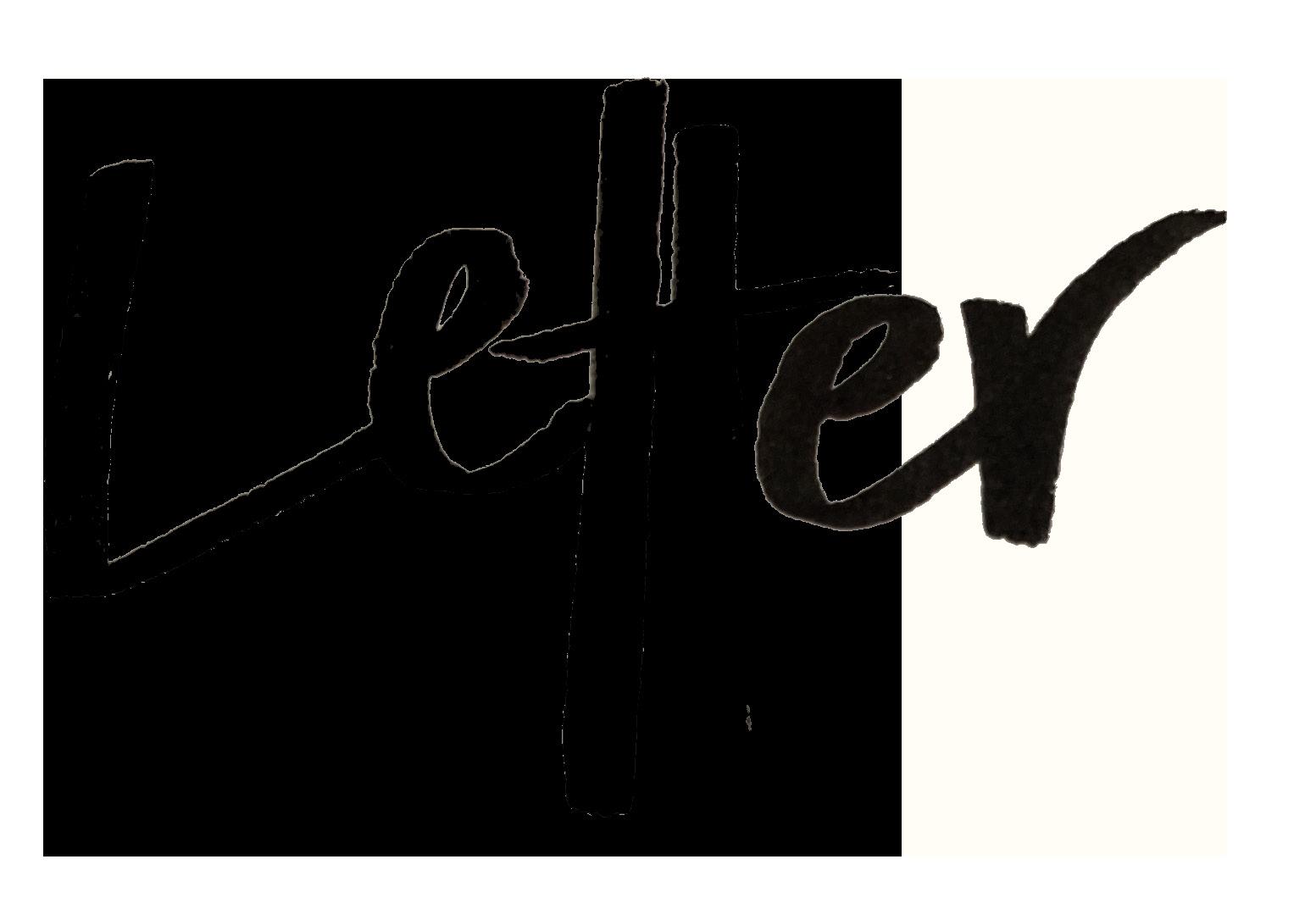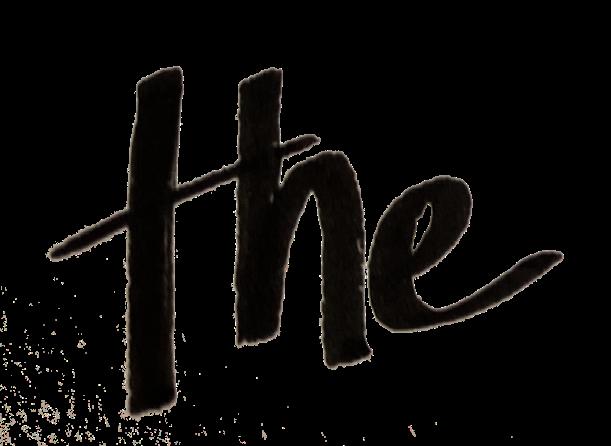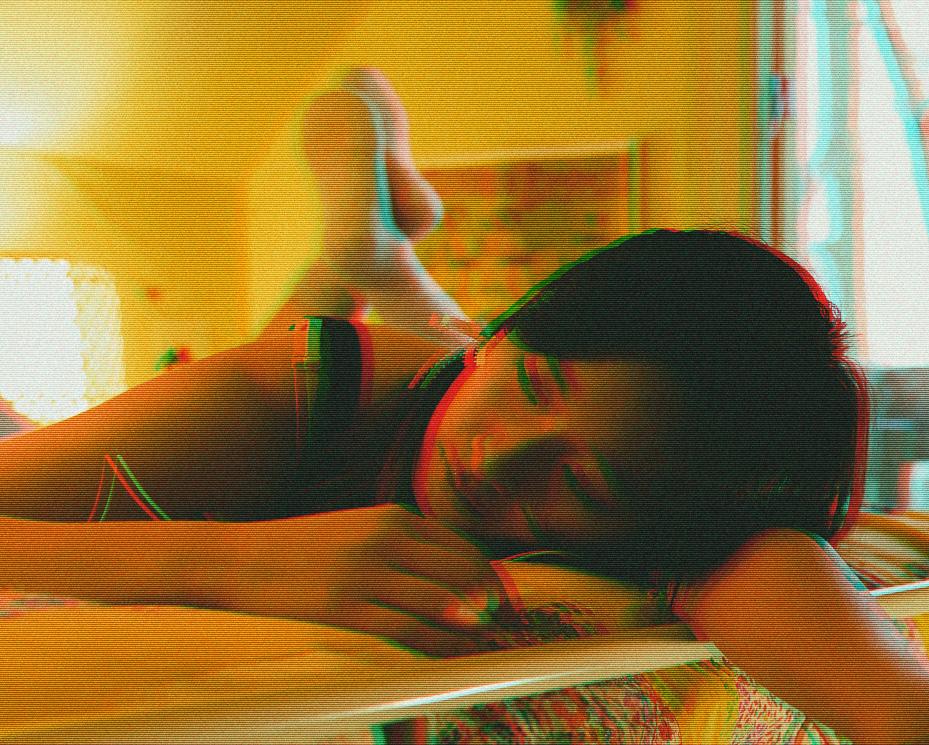


Volume 9 | Issue 4
Creative Director
SARAH ORY
Design Editor
MARGARET LAAKSO
RINO FUJIMOTO
Video Editor
SAM RAO
Finance Coordinators
MAGGIE CLARK
MAKENZIE KULCYZKI
Human Resources Coordinator
MOLLY KENNEDY
Standford Lipsey Student Publications Building
420 Maynard St, Ann Arbor, MI 48109
MELINA SCHAEFER
Editor-in-Chief
SOPHIA GAJDJIS
Publisher

Marketing Director
APOORVA GAUTAM
Print Fashion Editors
ANASTASIA HERNANDO
Digital Fashion Editor
MADISON PATEL
Events Coordinator
SENA KADDURAH
Social Media Coordinators
NEHA KOTAGIRI
LAUREN ROSENBERG
Operations Director
SOPHIA AFENDOULIS
Print Features Editor
BROOKLYN BLEVINS
Digital Features Editor
JANICE KANG
Managing Photo Editor
NOLAN LOPEZ
Public Relations Coordinators
IZZY SAUNDERS
KALI HIGHTOWER
Digital Content Editor
JESSICA CHO
Design Team
Emma Peterson, Kai Huie, Kimi Lillios, Sandy Chang, Mary Wurster, Liza Miller, Hannah Salameh, Nick Pippen, Kamryn Almasy
Fashion Team
Ben Michalsky, Dhruv Verma, Gigi Kalabat, Janae Dyas, Kelsea Chen, Olivia Mouradain, Peter Marcus, Sandy Chang, Sarah Dettling, Sophia Mckay, Elissa Li, George VanHaaften, Quincy Bowles, Linsey Wozniak, Sian Tian, Skye Thompson, Mia Lolo, Ava Wadle, Quri Kim, Peyton Benjamin, Minh Phan, Dana Gray, Darnell Perkins, Angela Li
Features Team
Ava Shapiro, Hannah Triester, Nadia Judge, Neha Kotagiri, Melissa Dash, Lucy Perrone, Jayde Emery, Tiara Partsch, Meera Kumar, Amina Cattaui, Natasha Martin, Catherine August, Sailor West, Dana Gray, Lynn Dang, Shelby Jenkins
Photography Team
Pearl Thianthai, Oliver Segal, Ebba Gurney, Hannah Anderson, Paulina Rajski, Taylor Pacis, Selena Sun, Margeaux Fortin, Vera Tikhonova, Tess Crowley, Alexander Kim, Korrin Dering, Lindsey Archibald, Alex Lam, Yueshan Jiang, Sam Rao, SinYu Deng, Jessica Cho, Maggie Kirkman
Videography Team
Coco DelVecchio, Samin Hassan, Eaman Ali, Hannah Hur, Riley Kisser, Sam Rao, Gianna Galette, Olivia Ortiz
Digital Content Team
Print Photo Editors
GABRIELLE MACK
SAM MCLEOD
Print Beauty Editor
YOUMNA KHAN
Digital Photo Editor
RILEY KISSER
Street Style Editors
SUREET SARAU ROSALIE COMTE
Benjamin Decker, Sonali Pai, Jessica Cho, Sarafina Chea, Esther Murray, Sarafina Chea
Finance Team
Elle Donakowski, Suma Moolaveesala, Manvita Battepati, Rendie Zhang, Olivia Jabari
Human Resources Team
Sarah Lindenbach, Lily Watchel, Emma Lewry, Diya Nambiar
Public Relations Team
Harini Shanker, Brandon Cole, Katherine Lambert, Devin Vowels, Ava Ben-David, Ava Ray, Samantha Wright
Events Team
Tara Nayak, Erin Segui, Shruti Patel, Tiara Blonshine, Paris Rodgers, Allie Cain, Lottie Winegarden
Social Media Team
Samedha Gorrai, Olivia Sun, Charlotte Foley, Hannah Ding, Aubrey Borschke, Camila Escobar, Ellie Ngassa, Aarya Padhye, Luiza Santos
Street Style Team
Alexa Rind, Jordyn Hardy, Jenna Frieberg, Xander Bower, Ernest Hawkes, Anika Minocha, Ellie Ngassa, Nina Walker



LETTER FROM THE EDITORS 04 DOWN ON THE WEST COAST 06 JESS’S ROOM 26 WORTH MY WEIGHT 14 ROOTED 10 DANCE SHOOT! 16 THE ROM-COM EFFECT 30 PRIVACY 32 HOUR OF PEARL 38 WHAT IS THE DIVINE FEMININE? 44 UNNAMED 46 3
“In our independent projects issue our members had completely their own. Unguided by a theme of any kind, spoke to one of their particular interests.



Most of these projects were completed over break or shortly used their free time to create art. After a stressful semester over winter break. These artists were able to find the energy this work. I am always inspired by the work artists create solely expression of their sensibilities and ideas.
And there is a wide variety of ideas being meditated on in this and injects it again with strategically placed reds to create and exterior world. In Hour of Pearl, Udoka Nwansi creates a pearl itself. In What is the Divine Feminine? Nadia Judge challenges considers the inherent femininity in the world around us.
I was so excited by the diversity of pieces in this issue, and the that readers can look at this issue and be inspired by the diversity own artistic endeavors. By taking initiative a work can feel more say what we want to say.
the opportunity to dedicate time to a concept that was kind, they planned and executed photoshoots and features that

shortly after, and I was so inspired to see the ways our members and finals season, it’s difficult to do anything but lie around energy to create, and indeed derived energy from the creation of solely because they want to; at times, this can be the truest


this issue. In Privacy, SinYu Deng sucks the color out of a space create a striking and evocative contrast that mimics our interior a rich and opulent world as beautiful and mysterious as the challenges traditional representations of god as male and
the amazing quality represented by each work. It’s our hope diversity of perspectives, and feel motivated to undertake their more completely our own, and it can give us the freedom to
Melina Schaefer Editor-In-Chief
5
DOWN

DOWN ON THE WEST COAST

7
DIRECTOR
MINH PHAN
STYLIST
MINH PHAN
PHOTOGRAPHER
MINH PHAN
GRAPHIC DESIGNER
LIZA MILLER
MODEL
MICHAEL GRAY




9
ROOTED





11
CORSET DESIGN - NINE MUSES @shopninemuses




PHOTOGRAPHER

SAM RAO

GRAPHIC DESIGNER
KAMRYN ALMASY MODELS

TAYLOR SHINE MIA ALLURE

13
WRITER CATHERINE AUGUST GRAPHIC DESIGNER RINO FUJIMOTO
Worth myWeight
Reflective surfaces seem to follow me wherever I go; in the water-stained mirrors in campus bathrooms, the polished glass kitchen table in my apartment, and the puddles of rain accumulated on the street after a heavy downpour, I find my eyes staring back at me. I hold my gaze for a second before reflexively peering down at my silhouette. After years of diligent effort unlearning anti-fat biases, I am relieved by the kindness of my eyes as they travel over the outline of my round stomach and wide thighs.
My eyes were not always this affectionate, though; my eyes were swords, striking every part of my body that I knew society deemed unacceptable. My soft, pillowy stomach became a testament to my inability to take care of myself, and my sturdy legs symbolized my laziness. I tried to ignore these baseless assumptions, but in a body that does not echo societal beauty standards, strides towards self-love alone could not erase my insecurities. Though my own eyes longed to warmly embrace my body, the world was persistent on shaming it.
Social media only exacerbated the difficulty of navigating the world in a fat body. Fat creators provided spaces for representation and body acceptance, but their comment sections were a hotspot for my self-loathing and over-thinking. With every post I made on public social media platforms, I feared the small yet tangible possibility
of my body being re-posted on other platforms as “fatspo”—dehumanizing inspiration for others to avoid weight gain. I felt that I couldn’t share my experiences of living in a fat body, either; whenever I wanted to vent about the doctor who gave me pamphlets on weight loss when I was there for an ear infection, or about my depressing deficiency of photos with friends due to my discomfort with cameras, I remembered the awful comments I could be subjected to and opted to stay silent.

To cope with this burden, I found myself gravitating towards spaces where I could flourish in the absence of my physical body. Most prominently, school transcripts showed no indication of my body type. I obsessed over grades and college acceptances to overcompensate for my fatness. A harmful compromise took root in my mind: I would accept my body as long as I was extraordinary in another area of my life. Yet as I neared graduation and achieved all the academic goals I set for myself, I felt an emptiness in my chest. Exhaustion occupied the space in my mind where pride belonged, and I started to doubt the validity of using academics to justify my body. I longed for authentic self-love, to feel valued for all that encompasses my being, including, rather than regardless of, my body.
This longing for acceptance initiated my exploration into body positivity and body neutrality. Deconstructing anti-fat media such
as My 600 Pound Life made me question the mainstream narratives of humiliation and negligence surrounding fat lives. I challenged the assumption that all fat people live unfulfilling lives, and I rejected the idea that even those who are unhealthy owe health to receive respect. I started reading literature surrounding fat liberation, specifically Sabrina Strings’ Fearing the Black Body: The Racial Origins of Fat Phobia, in which Strings explains that the societal obsession of slender bodies can be traced back to European thinkers who asserted that Black people are inherently fatter than white people. As a result, white women strived for thinness to distance themselves from Black women; in other words, the fear of fatness felt by many white women was an extension of a fear of Blackness and anti-Black racism.
As I dissected the negative stereotypes encompassing fatness, I discovered the freedom and bliss that comes with fat acceptance. I do not have to worry about getting fat and its potential impacts on my social life, love life, and societal respect; for many, the prospect of fatness is a nightmare, but for me, it is freedom in knowing that I am resilient and content in the face of an assumed worst-case scenario. There is an unspoken joy in having the ability to immediately detect shallow and disrespectful individuals before wasting months forming a relationship with them. The euphoria of finally developing my own style
without concerns of what others think, because my fatness is visible whether I am draped in an abundance of layers or adorned in a crop-top, is unmatched. I can deeply empathize with and appreciate the beauty of individuals who do not conform to conventional beauty standards, partly because I underwent that process for myself.
Living as a fat person in a world obsessed with thinness will never be easy. However, as I start to acknowledge my beauty and strength, the stares I get when I order anything that’s not a salad at a restaurant, or use the elevator instead of taking the stairs, do not bother me as much as they used to. As I continue to learn to love my body, I simultaneously learn that my body is a vessel that is part of me, but not all of me. All bodies possess physical beauty, but the creativity, compassion, and love housed within one’s body is where the real beauty lies. This realization, coupled with self-love, will not eradicate individual and systemic antifat biases, but I will continue to live authentically and unapologetically in my own skin. As my eyes gaze over my reflection, all of the familiar rolls and stretch marks are still there, but they no longer retract from my being—they have helped shape me into the thoughtful, empathetic, and kind person that I am. And that is beautiful.

15
CYPHER


CYPHER


17
PHOTOGRAPHER
SAM MCLEOD

RILEY KISSER
SELENA SUN
STYLISTS
RUBY CLAY
JACK RANDEL
KALI HIGHTOWER
GRAPHIC DESIGNER
KIMI LILLIOS
MODELS
RUBY CLAY
JACK RANDEL
KALI HIGHTOWER



19




21





23



25
PHTOGRAPHER

JESS CHO
STYLIST
JESS BERG
GRAPHIC DESIGNERS
RINO FUJIMOTO

JESS CHO
MODEL
JESS BERG




27


“do not look for healing at the feet of those who broke you”
- rupi kaur


29
THE -COM EFFECT
rowing up, rom-coms were always my favorite kinds of movies. Watching them gave me a sense of comfort and hope that I seldom felt with movies like The Dark Knight Rises. Don’t get me wrong, I loved action movies and movies about mind-bending concepts like time travel, but when I found myself in need of a movie to relax with on a Friday night after a whole week of school, rom-coms were where I would go. I loved to look at the ways the main characters dressed, how they acted, how they dealt with their qualms, and eventually, how I could be more like them. I wanted to be everything these iconic characters were, from the way they looked and dressed to the way they acted. To this day, I still love a cheesy romance movie, but I like to think I now possess a more nuanced understanding of how women and people who grew up female came to be so swayed by this genre of movies (and no, it is not because we are more emotional
I first came to realize there is so much more to romcoms than I initially thought when I watched BestDressed’s video on the portrayal of women in the media. Hearing this fashion YouTuber’s thoughts on feminism in the media made me realize that fashion in the media doesn’t have to be seen as something mutually exclusive from feminism. In the video, BestDressed explained that in the media of the 2000s, rom-coms were the only types of films in which women were able to see themselves onscreen as protagonists. Other mainstream movies like The Avengers and Inception often cast women, but only to fill in the role of the love interest or the unimportant sidekick. Media has much more of an influence on us than we might think, and as a woman who was an adolescent in the years before Greta Gerwig came to the frontlines, I know for a fact that rom-coms made me believe that

WRITER MEERA KUMAR ILLUSTRATION GRACE FILBIN GRAPHIC DESIGNER RINO FUJIMOTO
a woman’s only purpose was to find the perfect man. Though the initial pull of the rom-com is the woman-centered storyline, the underlying messages and understandings we got from these movies were much more misogynistic than one might expect. Our younger selves went to the movie hoping to find new ideas for our wardrobes and, possibly, the ability to put ourselves—women—in the main character’s shoes but left with the feeling that our lives weren’t quite complete without the company of a man. The link between the influence rom-coms had on fashion and on the mindsets of young women is, of course, fairly psychologically complex and I won’t claim to know much about it since I am not a psychology major. I can, however, talk through my own experiences of fashionistas in movies relaying problematic ideals to me in my formative years.
If you tell me you don’t recognize this outfit, you’re lying. Cher’s plaid yellow suit from Clueless is one of the most iconic looks of rom-com fashion history. But what did that mean for the fashion trends that came about at the time? I did some research about the most iconic fashion look to emerge from romantic comedies and there was an undoubted consensus among all the friends I polled that Cher’s fashion was it. If you still don’t believe how iconic Cher was, a simple Google search for 1995 fashion trends will give you everything you need to know.
The very first image you see is Cher from Clueless in her plaid outfit. How influential would a movie have had to be to define the fashion of the entire era of the mid-90s?
However, when we take a closer look at the ideals that Clueless portrays, we can start to see some of this movie’s problematic elements. Along with popularizing the phrase Ugh, as if, it depicts Cher as a teenager who is shallow and self-absorbed until a man comes along, sweeps her off her feet, and shows her how to be a caring person. Naturally, Cher and her best friend also have to fight over a man—the only reason why two women would ever fight, of course—and as soon as Cher gets with her man, everything in the world falls right into place. A truly accurate and fully logical portrayal of real life, if you ask me.
Though I could probably point out a dozen other movies of this genre that employ this very same trope of a helpless woman being saved by her boyfriend or love interest, I must stop myself from critiquing every romantic comedy that made up my and millions of other women’s childhoods. Rom-coms are undeniably wonderful and entertaining to watch, but having grown up with the inherent misogyny these movies can perpetuate through the bleeding of their influence from fashion to societal standards, I must caution you to look closely at what the romantic comedies you watch are making you think. Today, we certainly have many more rom-coms centered on women empowerment such as Lady Bird, but we still have a long way to go before the media stops brainwashing us into the misogynistic mindset we are already so conditioned to have.
31
PRIVACY
PRIVACY

PRIVACY
DIRECTOR
SIN-YU DENG
STYLIST
SIN-YU DENG
PHOTOGRAPHER
SIN-YU DENG

GRAPHIC DESIGNER
MARGARET LAAKSO
MODEL
TALIA FUN
33


35


37










39




















PHOTOGRAPHER UDOKA NWANSI GRAPHIC DESIGNER NICK PIPPEN MODEL DAPHNE WILSON 41














43
What is
The Divine Feminine?
…much more than a Mac Miller album.

When I picture figures of the divine, I think of Michelangelo’s “The Creation of Adam” frescoed on the Sistine Chapel—Adam and God’s arms outstretched, their fingers almost touching as God floats in the sky. I think of the Big Buddha in Hong Kong, palms facing the sky and the land, eyes closed in meditation. I think of Jesus, Moses, Mohammed: the men who serve as the faces of their respective religions.
As for the word “feminine,” I see a gradient of light pink and a bouquet of blushing roses. Audrey Hepburn adorned in pearls. Marilyn Monroe holding down the iconic white dress that billows so magically around her. It’s a gendered word, most often associated with women and the traditional reciprocal of masculine.
But together exists the “divine feminine,” which extends well beyond one belief system or gender, and instead serves as a spiritual lens with which to balance our perspectives. According to Gabriela Herstik, author of the book Goddess Energy, the divine feminine refers to a face of the divine spirit that is connected with the body, with nature, and with the cycles of creation and transformation. “It is the spiritual concept that there exists a feminine counterpart to the patriarchal and masculine worship structures that have long dominated organized religions,” Herstik explains.
But when considering “feminine” as the counterpart to “masculine,” it’s important not to equate it with women as opposed to men. Instead, these energies exist as complements to each other, represented by actions and symbols which are entirely ungendered.
You’ve likely experienced manifestations of the divine feminine and masculine in your own life. The moon and the sun, and each of their essential roles to our planet. The right and left sides of the brain, associated with creative and logical thinking. Yin and yang, a Chinese philosophical concept which symbolizes opposite interconnected forces like reception and production, introspection and extrospection, and femininity and masculinity. Its symbol is a circle composed of two sides which aren’t separated by a rigid, straight line but
rather an organic, S-shaped one, each side containing a seed of the other.
Like yin and yang, the divine feminine is connected with “receiving” or “hidden” qualities, while the divine masculine is connected with “producing” or “visible” qualities. Spiritualist Xavier Villanova identifies some keywords associated with the divine masculine as protection, discipline, authority, leadership, logic, and action. The majority of this world values these qualities due to an obsession with productivity and hustle culture. But while they’re are certainly important, their increased “value” causes for an imbalance in energy. Qualities of the divine feminine include intuition, heartcenteredness, compassion, wisdom, acceptance, sensuality, gentleness, kindness, and reflectiveness. Perhaps if more people of all genders channeled their divine feminine, the world would be a more balanced place.
But how do you actually channel the divine feminine?
In my experience, the process is about selfacceptance and self care, listening to your body and mind, and embracing the multiple energies that exist within you. While now it’s become something I’m intentional about in everyday life, the first time I worked on channeling my divine feminine felt a lot like meditation.

The recommended beginning practice is to “cultivate a sacred space.” For me, this was my college bedroom after about forty five minutes of decluttering. When I finally sat at my desk, I essentially meditated, asking myself how I can be more accepting of myself and others. I focused on my breaths and thought about breathing from the heart and reflecting on the experiences I’ve had. I allowed myself to experience and embrace all of the divine qualities within myself.
When it comes to qualities of the divine, there is an imaginary scale within every person which tips towards one side or another. What qualities might define you? What are qualities you could channel more of? Or less? Regardless of your gender identity, I encourage you to think about it. Afterwards, you might just feel more, well, balanced.
NADIA
HANNAH
WRITER
JUDGE
DESIGNER
GRAPHIC
SALAMEH
45











47







ELISSA LI
PATEL
LAMB
STYLISTS
MADISON
PHOTOGRAPHER ALEX
HUIE
49
GRAPHIC DESIGNER KAI
MODEL AMY DENG

























































































































